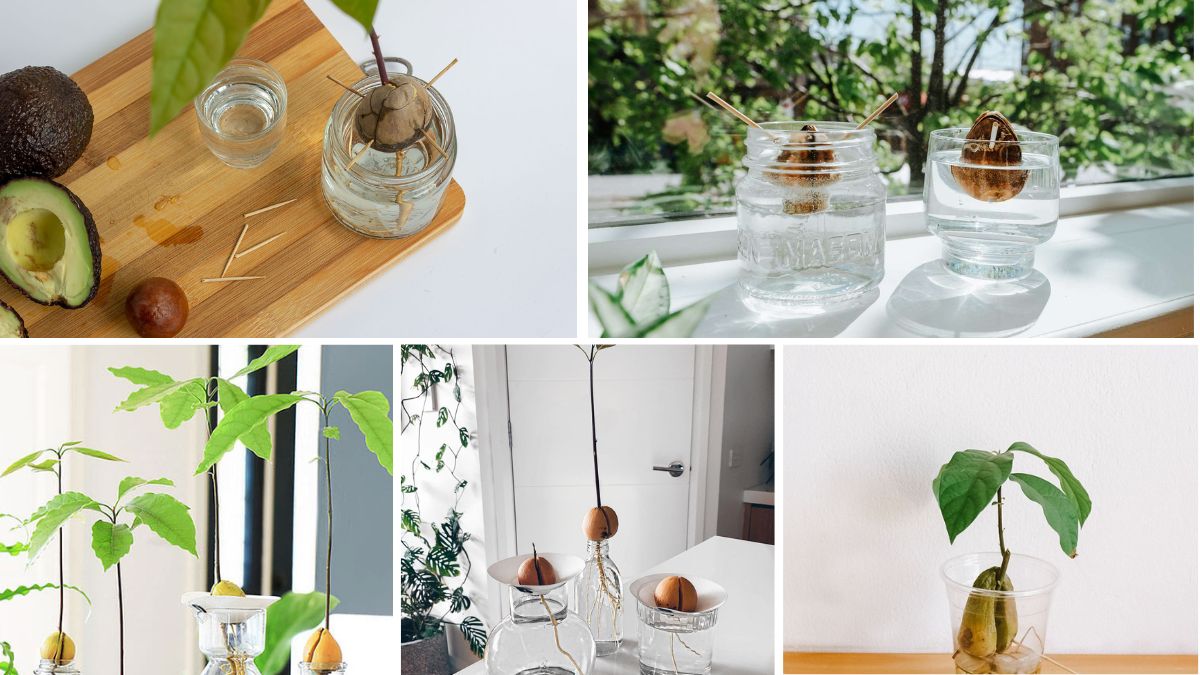Avocados are not only delicious but also highly nutritious, packed with healthy fats, vitamins, and minerals. While purchasing ripe avocados from the market is easy, growing your own avocado tree from a pit at home can be a rewarding and sustainable way to enjoy fresh fruit. Cultivating an avocado from a pit allows gardeners to observe the fascinating growth process, adds greenery to indoor spaces, and even contributes to long-term self-sufficiency. This article provides a step-by-step guide to growing avocados from pits at home, with detailed insights on care, planting techniques, and maximizing growth potential.
Introduction to Growing Avocado From a Pit
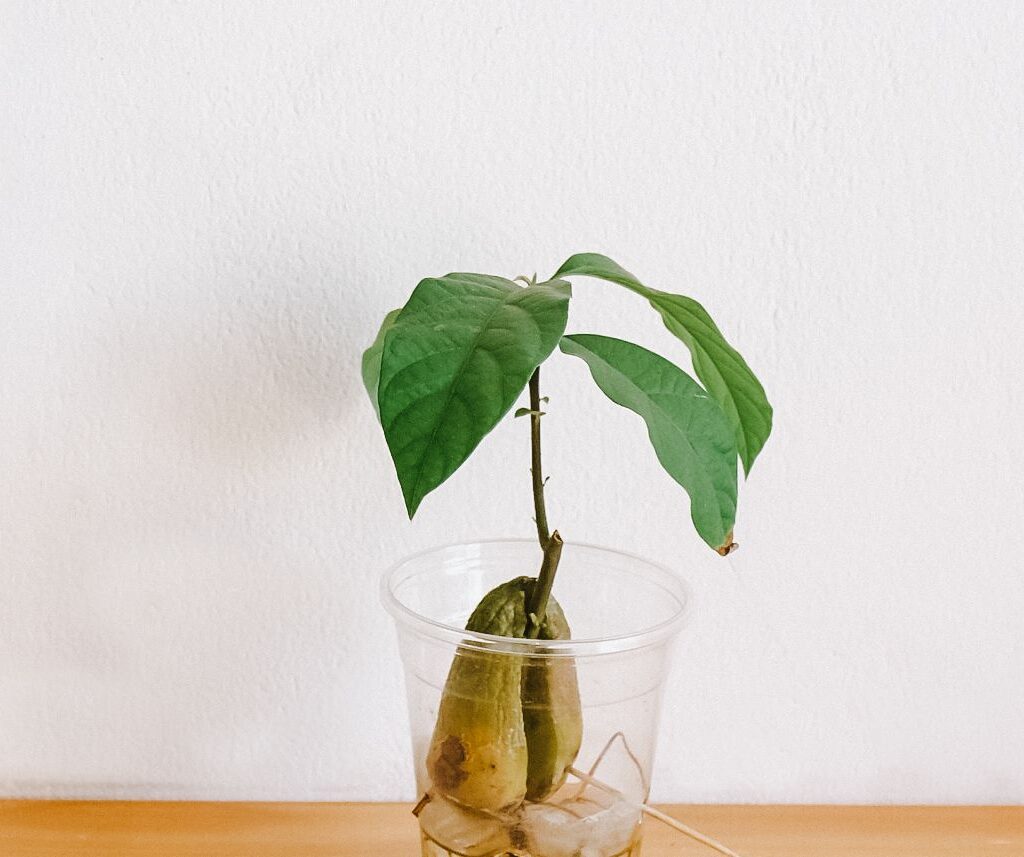
Growing an avocado from a pit is a simple and fun project for beginners and experienced gardeners alike. Avocado trees grown from pits may take several years to bear fruit, but the journey itself offers educational and aesthetic benefits. The process requires minimal materials, patience, and a commitment to proper care.
Benefits of Growing Avocado from a Pit:
- Low-cost and sustainable way to start an avocado tree.
- Provides an indoor greenery element and natural air purification.
- Enhances understanding of plant growth and propagation.
- Potentially produces home-grown fruit in the long term.
1. Selecting a Healthy Avocado Pit
The success of avocado germination depends largely on the quality of the pit.
Tips for Selecting a Pit:
- Choose a large, mature avocado and carefully remove the pit.
- Wash the pit gently to remove any remaining fruit residue.
- Avoid pits that are damaged, moldy, or cracked.
- Opt for varieties suited to your climate if planning to transplant outdoors later.
Importance: A healthy, undamaged pit increases the chances of successful germination and strong seedling development.
2. Preparing the Pit for Germination
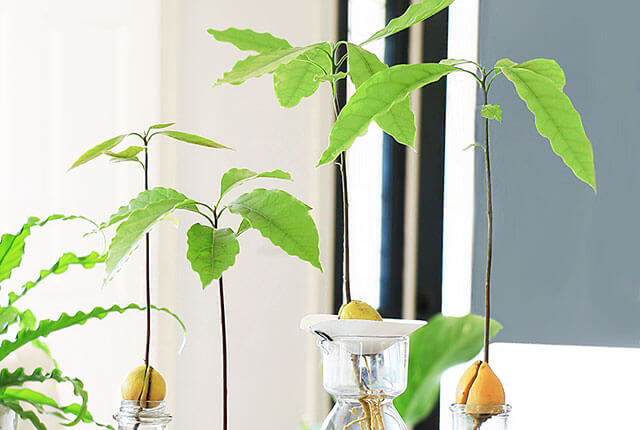
Avocado pits require preparation before planting to encourage root and shoot growth.
Steps:
- Remove any fruit residue and rinse the pit thoroughly.
- Identify the top (pointed end) and bottom (flat end) of the pit. Roots will emerge from the flat end.
- Insert three or four toothpicks around the middle of the pit to suspend it over water.
- Place the pit with the flat end submerged in water, ensuring the top remains above the surface.
Tip: Using toothpicks allows you to observe root and shoot development while keeping the pit stable.
3. Providing the Right Environment
Avocado seeds need warmth, light, and a stable environment to germinate successfully.
Tips:
- Keep the pit in a warm location, ideally between 60–85°F (15–29°C).
- Avoid direct sunlight; indirect light promotes gradual growth.
- Change the water every 5–7 days to prevent bacterial growth and ensure oxygenation.
- Maintain water level to keep the bottom of the pit consistently submerged.
Importance: Consistent warmth and clean water support healthy root and shoot formation.
4. Understanding the Germination Process
Patience is key when growing avocado from a pit, as germination can take several weeks.
Timeline:
- Roots typically emerge within 2–6 weeks.
- A shoot begins to sprout from the top after roots develop, usually within 6–10 weeks.
- Once the stem reaches 6–8 inches, it can be trimmed to encourage stronger growth.
Tip: Avoid disturbing the pit during early germination to prevent damage to emerging roots and shoots.
5. Transplanting Into Soil
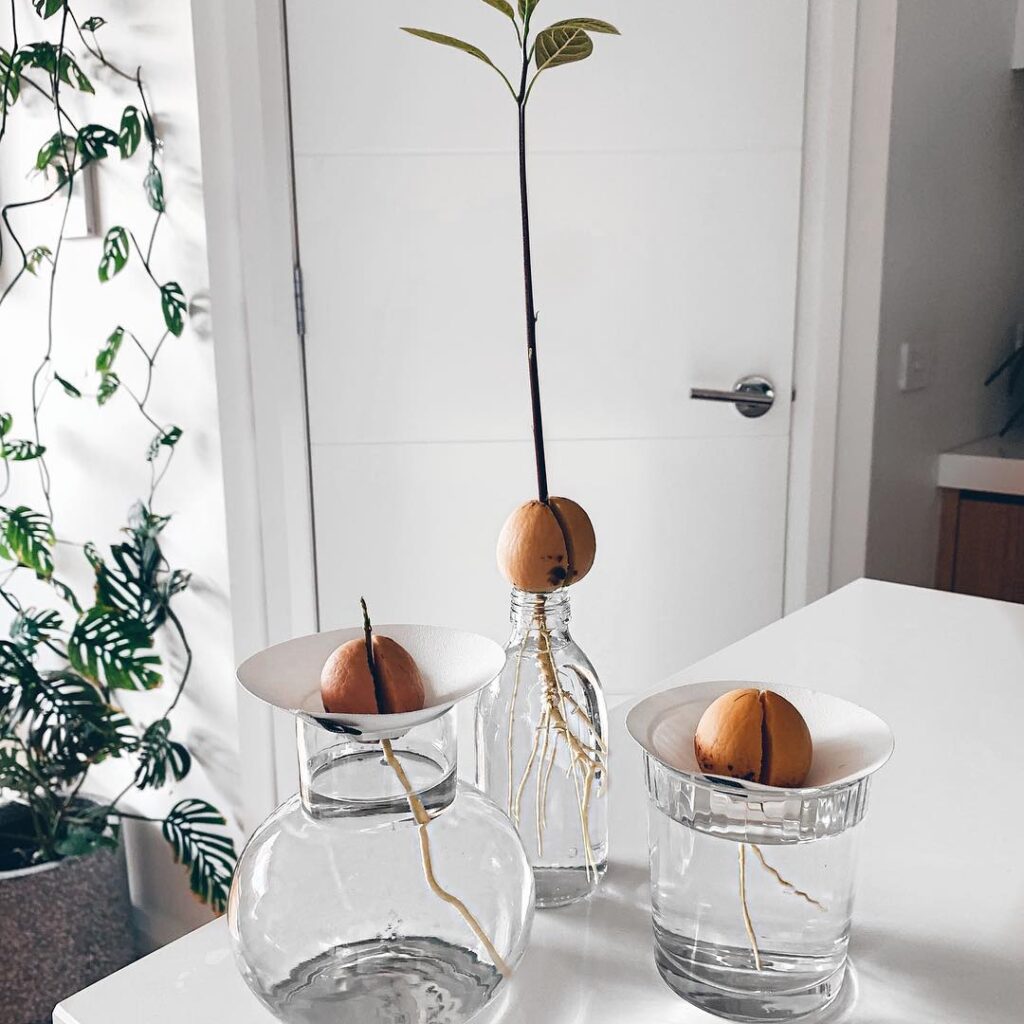
After the seedling develops a strong root system and several leaves, it can be transplanted into soil.
Steps:
- Choose a pot at least 10–12 inches in diameter with good drainage.
- Fill the pot with a well-draining soil mix rich in organic matter.
- Make a small hole and gently place the seedling with roots fully covered but the top of the pit slightly above soil.
- Water thoroughly after planting.
Tips:
- Avoid planting too deeply, as this may lead to rotting of the pit.
- A slightly elevated pit ensures proper air circulation and root health.
6. Watering and Moisture Management
Proper watering is essential for the health and growth of avocado seedlings.
Tips:
- Keep the soil consistently moist but not waterlogged.
- Water when the top inch of soil feels dry.
- Reduce watering slightly during cooler months when growth slows.
- Ensure excess water drains easily to prevent root rot.
Importance: Balanced moisture promotes strong root development and prevents fungal issues.
7. Providing Adequate Light
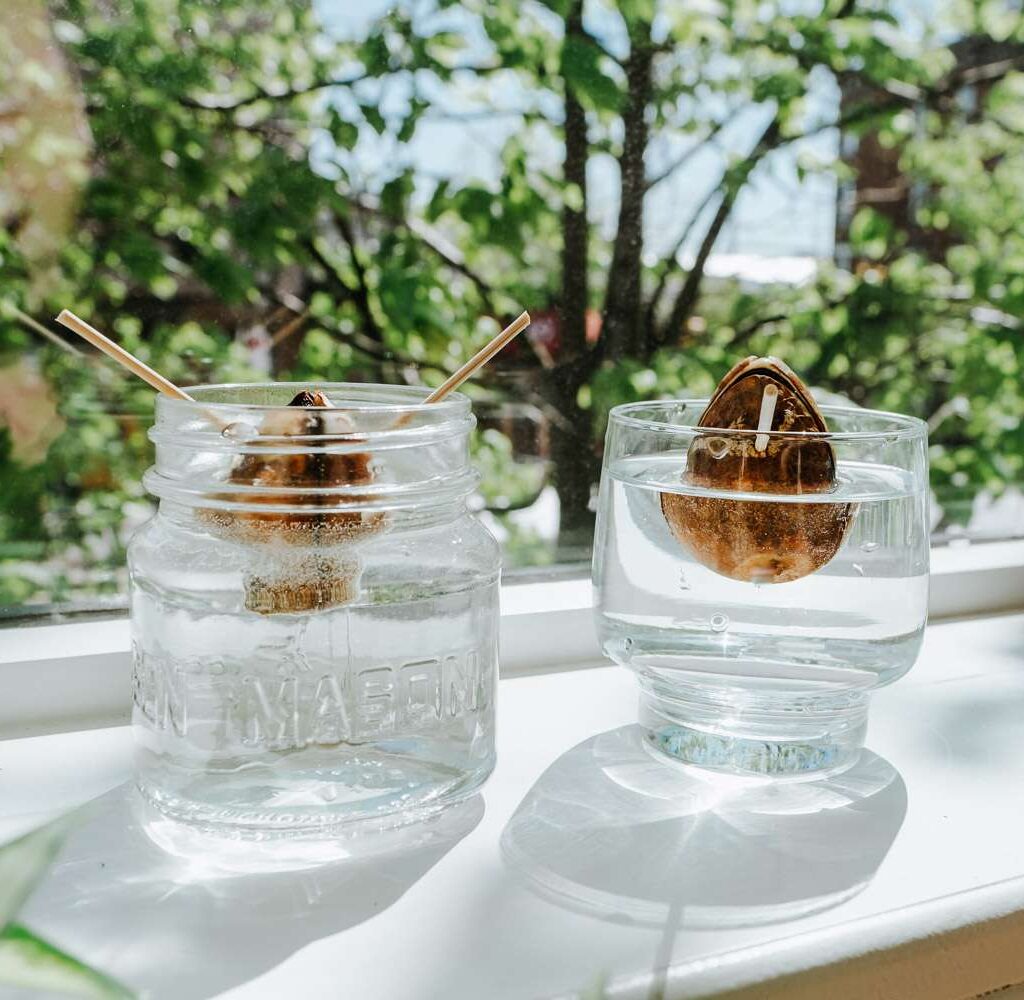
Avocado seedlings require ample light to grow strong and healthy.
Tips:
- Place the pot near a bright window or well-lit indoor space.
- If natural light is insufficient, supplement with fluorescent or LED grow lights for 10–12 hours daily.
- Rotate the pot periodically to ensure even light exposure.
Benefit: Adequate light encourages vigorous growth, sturdy stems, and lush foliage.
8. Fertilizing for Healthy Growth
Young avocado plants need nutrients to develop a robust root system and foliage.
Tips:
- Use a balanced liquid fertilizer diluted to half strength every 4–6 weeks.
- Incorporate organic compost or worm castings into soil to improve fertility.
- Avoid excessive nitrogen during early growth, as this may hinder root development.
Importance: Proper fertilization ensures strong, healthy plants capable of long-term growth and fruiting potential.
9. Pruning and Shaping the Plant
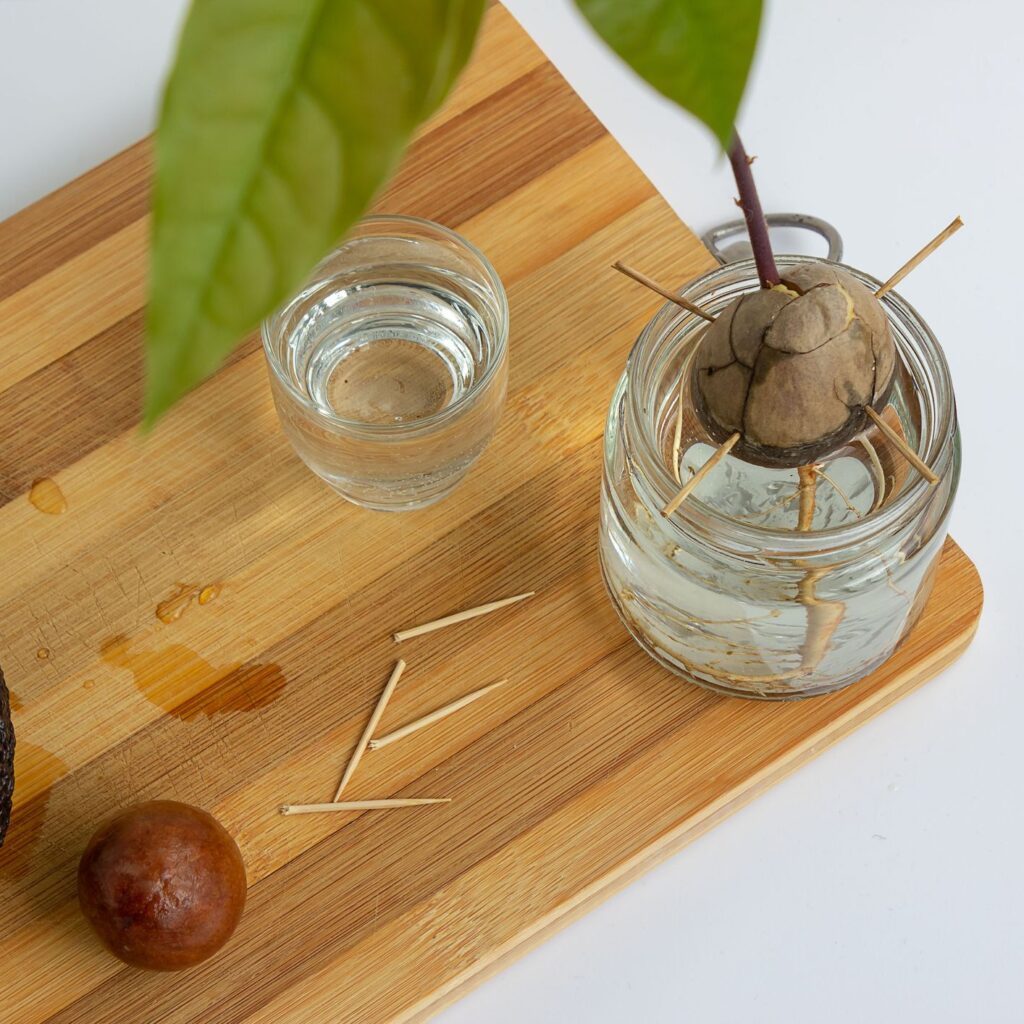
Pruning helps develop a bushier structure and encourages stronger growth.
Tips:
- Pinch off the top leaves when the stem reaches 12 inches to encourage branching.
- Remove any damaged or yellowing leaves regularly.
- Train stems to maintain a balanced, compact shape, especially for indoor growth.
Benefit: Pruning enhances aesthetics and encourages a fuller plant with more leaf growth.
10. Managing Indoor Conditions
Avocado seedlings are sensitive to environmental stressors such as drafts, temperature fluctuations, and low humidity.
Tips:
- Maintain indoor temperatures between 60–75°F (15–24°C).
- Keep plants away from heating vents, air conditioners, and drafty windows.
- Mist leaves occasionally to maintain humidity, especially in dry indoor climates.
Importance: Stable conditions reduce stress, prevent leaf drop, and promote healthy growth.
11. Propagating New Plants From Cuttings
Once your avocado plant matures, you can propagate new plants to expand your indoor garden.
Steps:
- Take 6–8 inch cuttings from healthy stems.
- Remove lower leaves and place the cutting in water to root.
- Once roots develop, transplant into soil or continue growing in water.
Tips:
- Propagation ensures a continuous supply of avocado seedlings.
- Multiple plants can be grown for indoor décor, gifting, or eventual outdoor transplantation.
12. Patience for Fruit Production
Growing avocados from pits requires patience, as fruit production may take several years.
Tips:
- Indoor plants may take 5–13 years to bear fruit.
- Grafted trees or outdoor-transplanted plants tend to produce fruit sooner.
- Focus on healthy foliage and growth; fruiting is a long-term reward.
Tip: Indoor avocado plants primarily provide lush greenery and air-purifying benefits, even before fruiting begins.
13. Troubleshooting Common Issues
Indoor avocado cultivation can encounter challenges.
Common Problems & Solutions:
- Root Rot: Overwatering or poor drainage. Remove affected roots and improve soil drainage.
- Leaf Yellowing: Indicates nutrient deficiency or irregular watering. Adjust fertilizer and watering schedule.
- Leggy Growth: Insufficient light. Increase exposure or use grow lights.
- Slow Growth: Check for temperature stress, low light, or nutrient deficiencies.
Tip: Early detection of problems ensures healthy seedlings and prevents long-term setbacks.
14. Decorative and Practical Tips
Avocado plants grown indoors can be both functional and aesthetically pleasing.
Ideas:
- Use decorative pots or planters to complement your interior décor.
- Place plants near kitchen windows for easy access to leaves for culinary use.
- Combine with other indoor plants for a lush, green indoor garden.
- Keep plants on trays to catch excess water and prevent mess.
Benefit: Indoor avocado plants enhance air quality, add greenery, and offer a visual focal point.
Conclusion
Growing an avocado from a pit at home is a rewarding project that combines patience, care, and fascination with nature. With proper selection, preparation, and maintenance, avocado pits can germinate successfully and develop into lush indoor plants. While fruit production may take years, the aesthetic and educational benefits make the effort worthwhile.
In summary:
- Start with a healthy, mature avocado pit.
- Use the toothpick and water method for early root and shoot development.
- Provide consistent warmth, light, and clean water.
- Transplant seedlings to soil once roots are strong.
- Maintain proper watering, fertilization, and pruning for healthy growth.
Indoor avocado plants provide greenery, improve air quality, and can eventually reward gardeners with home-grown fruit. With patience and attentive care, growing avocado from a pit becomes a fulfilling and educational journey.
